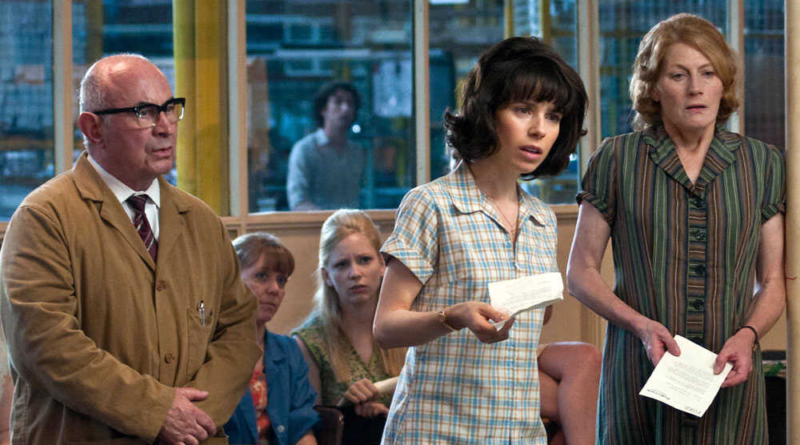Made in Dagenham: A Movie Analysis

“We are not separated by sex, but those who are willing to accept injustice… [We are] prepared to go into battle for what is right. And equal pay for women is right.” – Rita O’Grady
Based on the true story of the 1968 Ford sewing machinists strike in Dagenham, England, the movie “Made in Dagenham” tells a heartwarming story of a group of women facing unequal payments stood up for themselves, went on strike, and eventually led to the passing of the Equal Pay Act of 1970.
In the movie, the protagonist, Rita O’Grady, was a worker who works at the Ford Motor Co. plant where she sewed car seat covers with many other female workers. These women sit in a small, isolated room, enduring heat waves and working tirelessly for almost an entire day without getting up to see the sunlight. One day, these women were told that female seamstresses would be classified as “unskilled labor”,” reducing the wages these women receive. The women became angry and felt humiliated – after all, they have worked hard in this job and the work is worth as much as that of male workers in other factories. Encouraged by a sympathetic union representative, Rita agreed to take the women’s grievances to Ford. The meeting went badly and, outraged at the lack of respect the company showed them, Rita led her female colleagues on strike. The workers refused to go back to work until they received equal pay and respect from the British Parliament. After much struggle and negotiation, Rita was given the chance to address a number of male decision-makers and legislators at the Trade Union Conference, where she firmly demanded equal pay for women and pushed for change. Ultimately, the Machinists’ strike led to the passing of the Equal Pay Act of 1970, an important milestone in the fight for gender equality in the UK workplace.
After watching “Made in Dagenham,” I felt heartwarmed and deeply empowered. The film highlights the struggles of working class women and their role in shaping labor rights and social norms during this time, making it a significant portrayal of British social history. As Lisa Burnett suggests in the film, history is written by these extraordinary people and there has to be someone to initiate changes. It’s heartwarming to see that there have been so many female leaders in history who have brought about change, whether in the scientific field or in legislation or education. It is their efforts that are driving the wave of feminism bit by bit; it is their efforts that people today can live in a more equal society where women enjoy the same rights as men.
The empowering part is that as someone who is deeply rooted in feminism and has been advocating for women’s rights for many years, I realized that there needs to be more changes. Although I have given many speeches to my classmates and teachers about the welfare of women and written many articles to encourage girls to participate in sports activities and be brave to compete with others, I felt that it is all too insignificant compared to what Rita did in the movie. Tackling social problems on a broader scale, such as the gender pay gap or inequality in education, is of greater importance and therefore has a more profound impact on the progress of society as a whole. In fact, gender pay gap is still an issue in many regions of the world, and China is no exception. Women are underrepresented in union leadership positions and in government, and their concerns about unequal pay are often sidelined or not sufficiently addressed. My goals shouldn’t just be centered around to my own community – after gaining more knowledge in the social sciences at the college level, I would campaign for more rights for women in China or around the world and become someone like Rita O’Grady, a woman who has done something that has made a lasting impact and made this world a better place.

